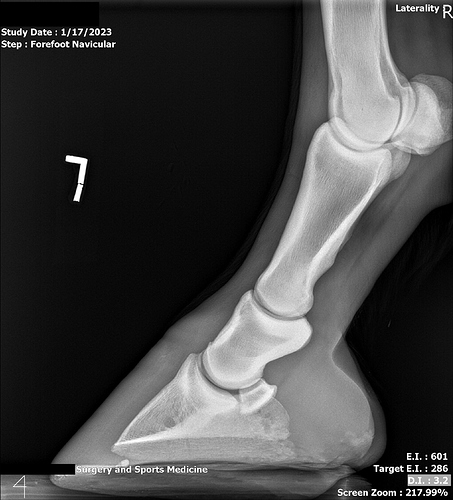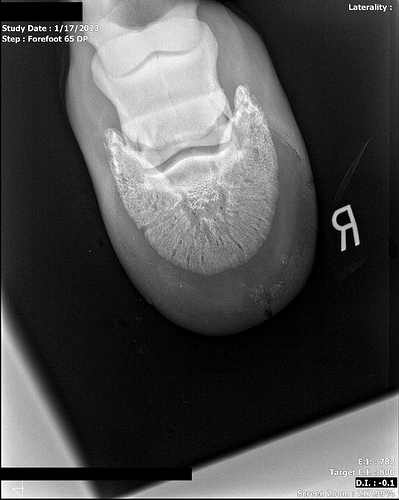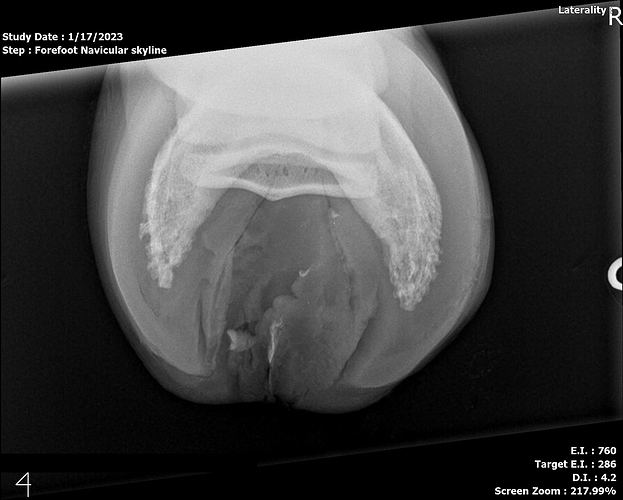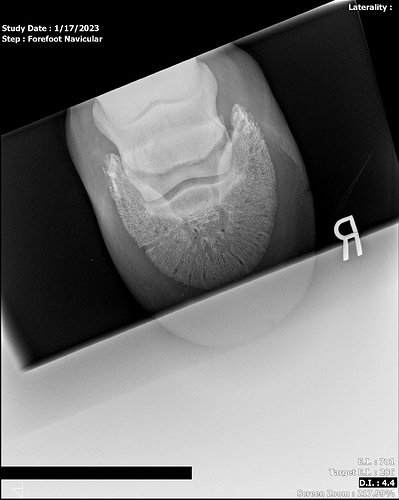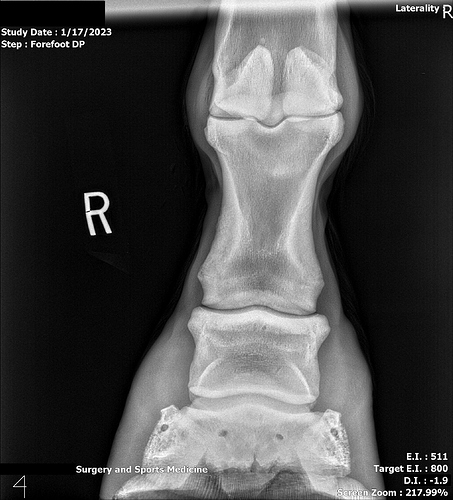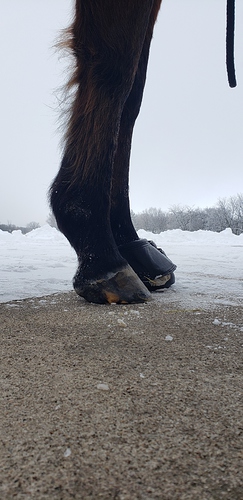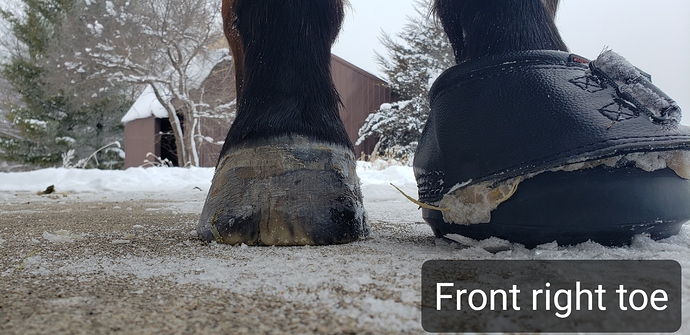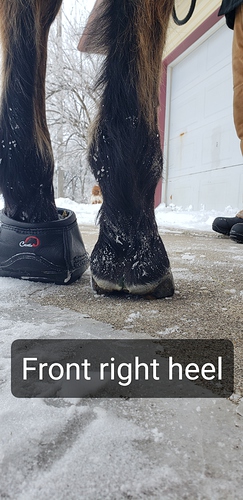Hey all,
I’m in the process of trying to find out what tests I need to ask for and am pushing for answers as no one seems overly concerned and I want to be sure I don’t let this go and then find out later it could have been treated sooner!
19 y/o barefoot quarter horse, little to no ‘work’ his life, he’s for trails and we don’t go hard. He does love to blast around the pasture and up for mealtime, though.
Around 8 weeks ago, I noticed he wasn’t wanting to stand for the trimmer. He wasn’t being naughty, but I could tell he was trying to tell me something wasn’t right. I couldn’t tell if it was the trimming or the act of holding up one leg and having weight on the other three. It’s winter here, so the ground is hard as well. He’s got soft footing if he wants it, with choice to move around the dry lot and pasture. He seems careful and short to me, but it’s very hard to tell since it is winter and there is snow and ice on the ground.
A couple weeks ago I noticed he was standing on his toes (forelegs) and pointing a rear. Found thrush in all 4 feet. Started aggressively treating that, daily for the past 12 days to date). I was thinking that could cause him to not want to bear weight on his heels…but he does not react when I press with the hoof pick or dig anything out, etc. What really concerns me is that when he’s standing, still on his toes, his knees wobble. It’s like his ligaments/tendons are strained or hurting. When I ask to pick up a front foot, he snatches his rears up and in toward the opposite hock, down, then switches. Like it’s going to hurt to put weight on them when he picks up a front.
He has seen one vet so far, rears were disregarded and front feet were radiographed, showing thin soles. Vet also commented that he doesn’t have a lot of heel, perhaps need different trimming approach. He did NOT react to the hoof testers at all, anywhere…walked and trotted for the lameness exam.
My gut is telling me it is not his feet or that his feet are causing other pain. I’d like to get ultrasound on all four to be sure, I’m so dreadful it’s something like DSLD or similar, and that he will continue to be uncomfortable until I find someone to listen.
I just wanted some thoughts or to pick anyone’s brain who has seen anything similar on what direction I should maybe be going from here. I am looking for a good barefoot trimmer and other opinions on his feet to eliminate that as a cause for any pain further up the leg. I’m still treating the thrush until it disappears (it has greatly improved to this point in time).

